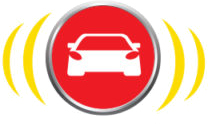The Quiet Cost of Clunky Systems
At the end of a long day, your service advisor is still at their desk, manually entering a customer’s payment into the DMS. It’s 6:45 p.m. The repair order was closed an hour ago. And this isn’t a one-off—it’s a routine.
Across the dealership, the F&I manager is chasing down a deposit that was paid by phone but never recorded in the deal jacket. Another manual entry. Another disconnect
The frustrating part? There is dealership-specific technology that eliminates this completely.
So why are so many teams still stuck? Many dealerships are using generic, disconnected payment tools that were never designed to work with how a dealership actually runs. And the cost of that inefficiency isn’t small.
Where the Cost Really Adds Up
Here’s what fragmented systems are really costing you:
- Wasted time: Advisors rekey data. Controllers reconcile by hand. Everyone works around the system instead of with it.
- Lost revenue: Unrecovered charges, missed service upsells, and delayed transactions all add up.
- Burned-out staff: High-performing teams don’t want to spend their days fixing process gaps—they want tools that support their success.
- Lower CSI: A slow, clunky checkout experience leaves a final bad taste in the customer journey.
These aren’t small issues. They’re daily operational leaks—the kind that quietly chip away at your profit and productivity.
Why Dealerships Deserve Better
Dealerships are complex businesses. They’re not retail stores. They don’t run like restaurants or dental offices. And yet, many are still using generic payment solutions that treat them as if they do.
Service, parts, accounting, compliance, finance—all of these departments touch payments. And when your system isn’t purpose-built to connect those dots, the burden falls back on your people.
Dealers shouldn’t have to work around their payment solution. The right solution should work around the dealership.
There are platforms designed specifically for automotive. Most dealers simply haven’t been shown what a fully integrated workflow really looks like.
Integration Isn’t Optional—It’s Everything
The automotive industry has advanced so far that now there are driverless cars navigating public roads… but inside many dealerships, payment systems still don’t communicate with their DMS.
It sounds absurd—but it’s the everyday reality for too many teams.
Technology is evolving fast. But too many internal dealership systems are stuck in the past.
Think about that: Dealerships are investing in digital retail, online scheduling, and chatbots—but behind the counter, payment data is still being typed in by hand.
Dealerships have embraced technology for the customer experience—online shopping, digital signatures, text-to-pay. So why are their internal teams still stuck with outdated tools and processes?
Integration isn’t optional. It’s not innovation—it’s the bare minimum. Without it, dealerships are wasting time, eroding margin, and burning out their people—for no good reason. Modern, integrated platforms exist. The only thing missing is the willingness to stop accepting less.
Raise the Bar
The automotive industry has moved forward—but many payment providers haven’t.
Even those that claim to be “dealer-specific”, simply offer card terminals and talk about rates, but leave your team stuck with disconnected tools and inefficient workarounds. That’s not a platform. That’s a patch.
A true platform doesn’t just process payments—it connects them to every part of the dealership.
From service lane checkout to accounting reconciliation, from compliance to reporting, it should move seamlessly through every step. No bottlenecks. No duplications. No surprises.
You’ve already modernized your customer experience.
Now it’s time to bring that same innovation to how your dealership actually runs. When payment systems are connected, the headaches disappear—and your team can get back to what they do best: selling and servicing vehicles.


